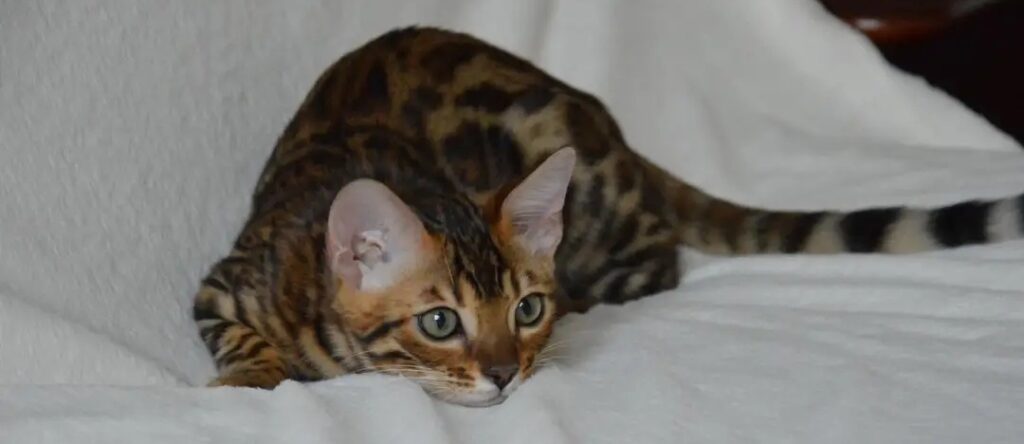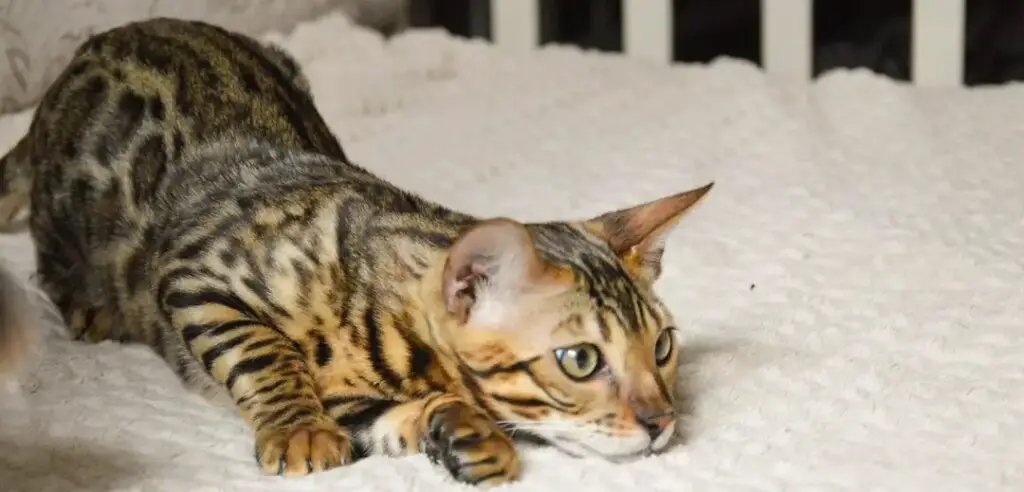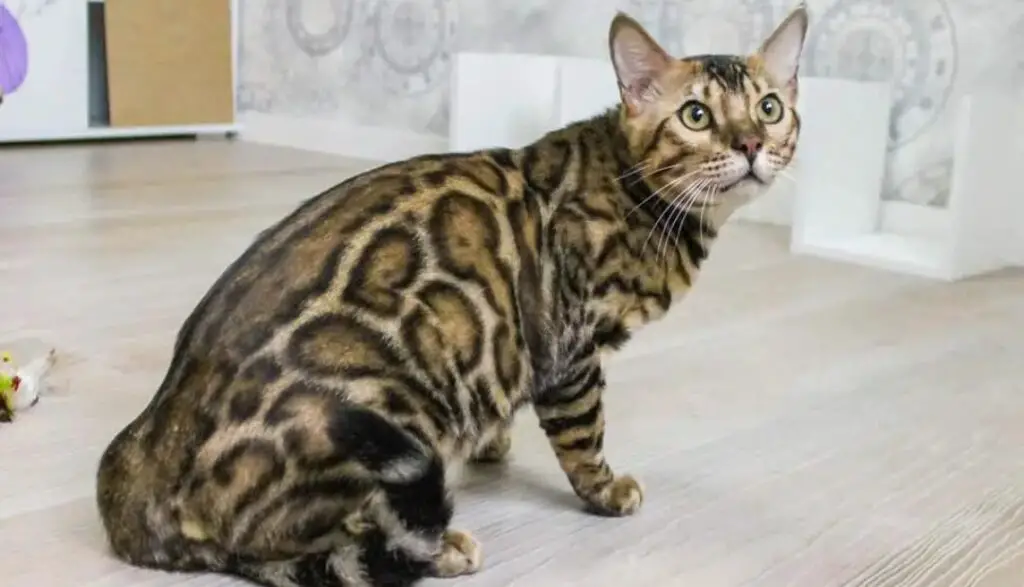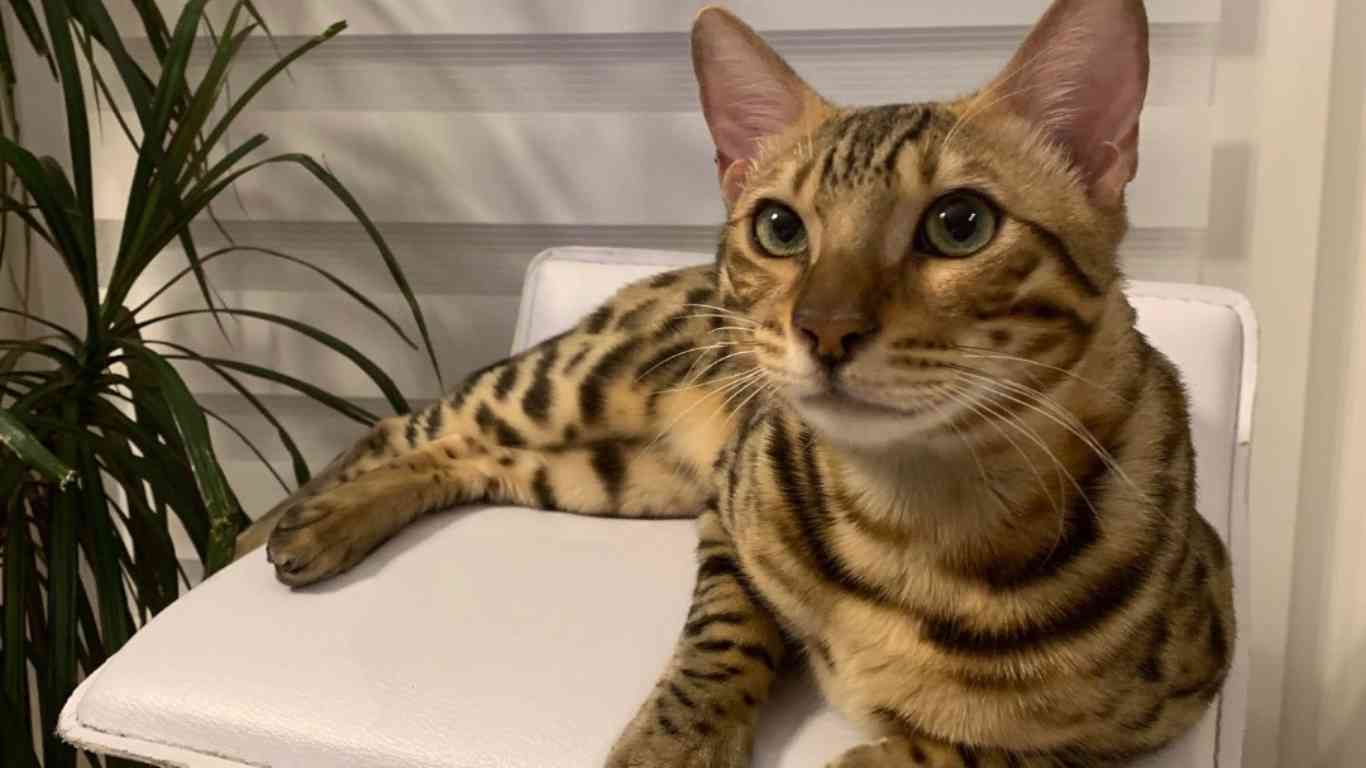Welcome to the captivating world of Bengal cats and their extraordinary lifespan!
From their mischievous antics as kittens to their regal and majestic presence as adults, these incredible felines are known for their longevity and vitality.
Join me as I unravel the secrets behind their extended lifespan, revealing the key factors that contribute to their health and happiness.
How long do Bengal cats usually live?
Bengal cats typically have a lifespan of 12 to 16 years, however, with proper care and a healthy lifestyle, some Bengal cats can live beyond 16 years.
Regular veterinary check-ups, a balanced diet, exercise, and a stress-free environment can contribute to their longevity.
It’s important to note that individual cats may vary, and genetic factors can also influence their lifespan.
Factors affecting Bengal cat lifespan

After some online research and talking to my friends who own Bengal cats, I was able to come up with the list of factors affecting Bengal cat lifespan.
Here are some common factors affecting Bengal cat lifespan and what to know about these factors:
1. Genetics: Genetics play a significant role in determining a Bengal cat’s lifespan. Certain genetic factors can predispose them to specific health conditions or diseases that may affect their longevity.
For example, some genetic disorders like hypertrophic cardiomyopathy (HCM) or progressive retinal atrophy (PRA) can be more prevalent in certain bloodlines, which can directly affect your Bengal lifespan.
Responsible breeders carefully select breeding pairs to minimize the risk of passing on such genetic conditions.
When adopting a Bengal cat, it’s essential to choose from reputable breeders who prioritize genetic health and conduct thorough health screenings.
2. Nutrition: Proper nutrition is vital for the overall well-being and lifespan of Bengal cats. A balanced diet that meets their nutritional requirements is essential.
Feeding them high-quality cat food formulated specifically for their age and life stage is crucial.
A diet rich in animal-based protein and low in fillers is ideal. Avoiding excessive treats and providing fresh water at all times is also important.
Maintaining a healthy weight through a well-balanced diet can help prevent obesity-related health issues and promote a longer lifespan.
3. Spaying and Neutering: Spaying (for females) and neutering (for males) Bengal cats can significantly impact their lifespan.
These procedures help prevent certain reproductive-related diseases, such as uterine infections and testicular cancer.
Additionally, spaying and neutering can also reduce behavioral problems, such as aggression and roaming tendencies, which may expose cats to outdoor dangers.
It’s generally recommended to spay or neuter Bengal cats at the appropriate age, as advised by a veterinarian.
4. Certain Health Issues: Bengal cats, like all breeds, may be susceptible to certain health issues that can affect their lifespan.
These can include conditions like HCM, PRA, hip dysplasia, and kidney disease, among others.
Regular check-ups with a veterinarian can help detect and address these issues early on. Genetic testing, as mentioned earlier, can also help identify potential risks.
Prompt medical intervention and appropriate treatment plans can help manage these health issues and improve the chances of a longer, healthier life for Bengal cats.
5. Healthcare and Veterinary Care: Providing routine healthcare and regular veterinary check-ups are essential for Bengal cats.
Vaccinations, parasite prevention, and dental care are all crucial components of maintaining their overall health and extending their lifespan.
Regular visits to the veterinarian allow for early detection of any potential health concerns and enable timely interventions.
Following the recommended vaccination schedules and staying up to date with preventive care are key to ensuring the well-being of Bengal cats.
6. Environmental Factors: The environment in which a Bengal cat lives can significantly impact their lifespan. Creating a safe and stimulating environment indoors is essential.
Bengal cats are known for their high energy levels and need plenty of mental and physical stimulation.
Providing them with interactive toys, scratching posts, and vertical spaces to climb can help fulfill their natural instincts and prevent boredom-related behaviors.
Keeping the living area clean, free from hazardous substances, and maintaining a stress-free atmosphere is also crucial for their overall well-being.
7. Exercise and Activity Levels: Regular exercise and physical activity are vital for Bengal cats to maintain a healthy weight, muscle tone, and mental stimulation.
Engaging them in play sessions using toys that encourage their natural hunting instincts can be beneficial.
Interactive playtime not only helps with physical fitness but also strengthens the bond between the cat and its owner.
Adequate exercise can reduce the risk of obesity, prevent behavioral issues, and promote a longer, healthier life.
Average Life Cycle of a Bengal Cat

To understand the life cycle of a Bengal cat, there are areas we have to look at.
With that in mind, here are the average life cycle of a Bengal cat:
1. Kitten
The average life cycle of a Bengal cat begins with its adorable kitten stage.
Kittens are generally born with their eyes closed, and they rely heavily on their mother for nourishment and protection.
They start opening their eyes at around 10 to 14 days old, and their curiosity and playfulness start to blossom.
During this stage, it is crucial to provide the kitten with a balanced and nutritious diet to support their rapid growth.
High-quality kitten food is recommended, as it contains essential nutrients such as protein, vitamins, and minerals that aid in their development.
Kittens also require plenty of exercise to help build strong muscles and bones.
Interactive toys and playtime with their human companions are great ways to keep them active and engaged.
It is important to provide a safe and stimulating environment for them to explore and learn.
2. Adolescence
As Bengal cats enter adolescence, usually around 6 to 12 months old, they undergo significant physical and behavioral changes.
Their bodies continue to grow, and they become more independent and curious about their surroundings.
During this stage, it is essential to continue providing a well-balanced diet that supports their growth.
Adjusting the portion sizes based on their weight and activity level is important to prevent overfeeding or underfeeding.
Adolescence is also a time when Bengal cats may exhibit more energy and require increased exercise.
Providing them with opportunities to climb, jump, and play is important for their physical and mental well-being. Interactive toys and regular play sessions are highly recommended.
3. Adulthood
Once Bengal cats reach adulthood, usually around 1 to 2 years old, they have reached their full size and maturity.
At this stage, their energy levels may stabilize, and their behavior may become more settled.
Maintaining a balanced diet is still important during adulthood to support their overall health. Feeding them high-quality cat food that meets their specific nutritional needs is crucial.
It is also advisable to consult with a veterinarian to determine the appropriate portion sizes and feeding schedule.
While adult Bengal cats may not require as much exercise as kittens or adolescents, regular physical activity is still important to prevent obesity and promote good muscle tone.
Engaging in interactive play sessions and providing scratching posts or climbing trees can help keep them active and mentally stimulated.
4. Senior
As Bengal cats enter their senior years, typically around 7 years old, they may start to experience certain age-related changes.
Their energy levels may decrease, and they may require more rest and relaxation.
Adjusting their diet to meet their changing needs is crucial during this stage.
Senior cat food formulas are designed to support their aging bodies, providing appropriate levels of nutrients and addressing specific health concerns such as joint health and digestion.
While senior Bengal cats may not be as active as they once were, it is still important to encourage gentle exercise to maintain muscle tone and joint flexibility.
Providing them with comfortable resting spots and easy access to litter boxes and food/water bowls is also important for their comfort and well-being.
Regular check-ups with a veterinarian become even more important during the senior stage to monitor their overall health and address any age-related issues that may arise.
What can I do to ensure my Bengal cat has a long and healthy life?

After talking to my friends who own Bengal cats and researching online about helping a cat live longer, I was able to come up with this list.
Therefore, to help your Bengal cat live longer, here are a list of some things you should do:
1. Providing Balanced Diet: Providing a balanced and nutritious diet is crucial for your Bengal cat’s health and promotes longer lifespan. If your not experienced about Bengal cat nutrition don’t hesitate to consult with a veterinarian to determine the best diet plan that meets your cat’s specific needs. A diet rich in high-quality proteins, essential fatty acids, and vitamins will support their overall well-being.
2. Regular Veterinary Check-ups: Regular visits to the vet are essential for preventive care and early detection of any health issues. Schedule routine check-ups to monitor your Bengal cat’s health, receive vaccinations, and address any concerns promptly. As a cat owner, I can tell you that regular veterinary check-ups will help you catch any health conditions in your Bengal cat as early as possible.
3. Exercise and Mental Stimulation: Bengal cats are highly active and intelligent, therefore, should get regular exercise. Engage your Bengal cat in regular interactive play sessions to keep them physically and mentally stimulated. Provide toys, scratching posts, and climbing structures to mimic their natural instincts.
4. Dental Care: Dental hygiene is often overlooked but is vital for your Bengal cat’s overall health. Regularly brush their teeth with cat-friendly toothpaste and provide dental treats or toys to help maintain their dental health. Keep in mind that Bengal cats are prone to dental issues, so you should always watch out for dental issues.
5. Provide Regular Hydration: Ensure your Bengal cat has access to fresh water at all times. Cats have a low thirst drive, so consider using a water fountain or adding wet food to their diet to increase their water intake, which helps prevent urinary tract issues.
6. Try Neutering/Spaying your Bengal cat: Consider having your Bengal cat neutered or spayed if you don’t intend to breed them. This helps prevent reproductive health issues that can affect their lifespan, reduces the risk of certain cancers, and can positively impact their behavior.
7. Provide a Safe Indoor Environment: Creating a safe and stimulating indoor environment is crucial for your Bengal cat’s longevity. Protect them from potential hazards, such as toxic plants, chemicals, and open windows. Provide plenty of hiding spots and vertical spaces to satisfy their climbing instincts.
8. Provide Regular Parasite Prevention: Regularly use flea, tick, and parasite preventatives recommended by your veterinarian. Parasites can lead to various health issues and discomfort for your Bengal cat. Parasites can give your Bengal cat health issues that may directly affect their lifespan.
9. Stress Reduction: Cats, including Bengal cats, can be sensitive to stress. Minimize stressors in their environment, such as loud noises, sudden changes, or overcrowding. Provide them with a quiet and comfortable space where they can retreat when needed.
10. Show Love and Affection: Lastly, shower your Bengal cat with love and affection. Emotional well-being is just as important as physical health. Spend quality time with your cat, provide them with a safe and comfortable space, and create a strong bond based on trust and companionship.
Remember, each Bengal cat is unique, and their needs may vary. Regular communication with your veterinarian and paying attention to your cat’s individual behavior and health will help you provide the best care for a longer and happier life together.
Conclusion
In conclusion, the Bengal cat’s impressive lifespan is a testament to their resilient nature and well-being. With proper care, a nurturing environment, and regular veterinary check-ups, these magnificent creatures can grace our lives with their playful presence for many years to come. So, embark on this delightful journey with a Bengal cat and cherish the precious moments you’ll share together.









